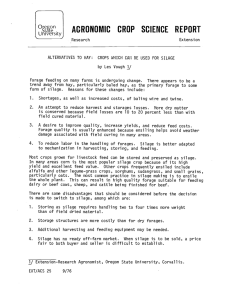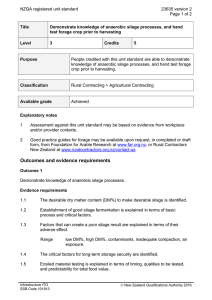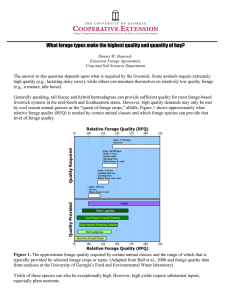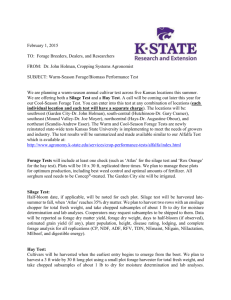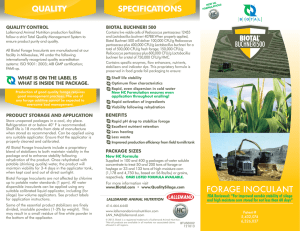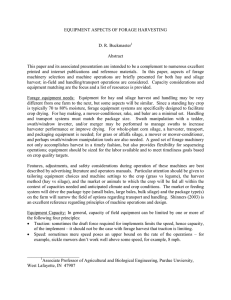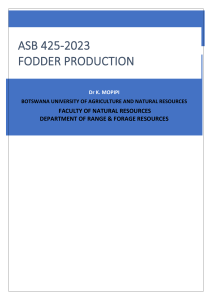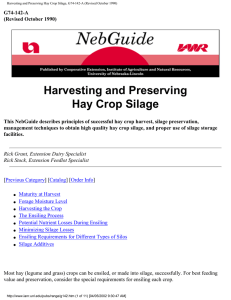careful decision making required to maximise forage value
advertisement
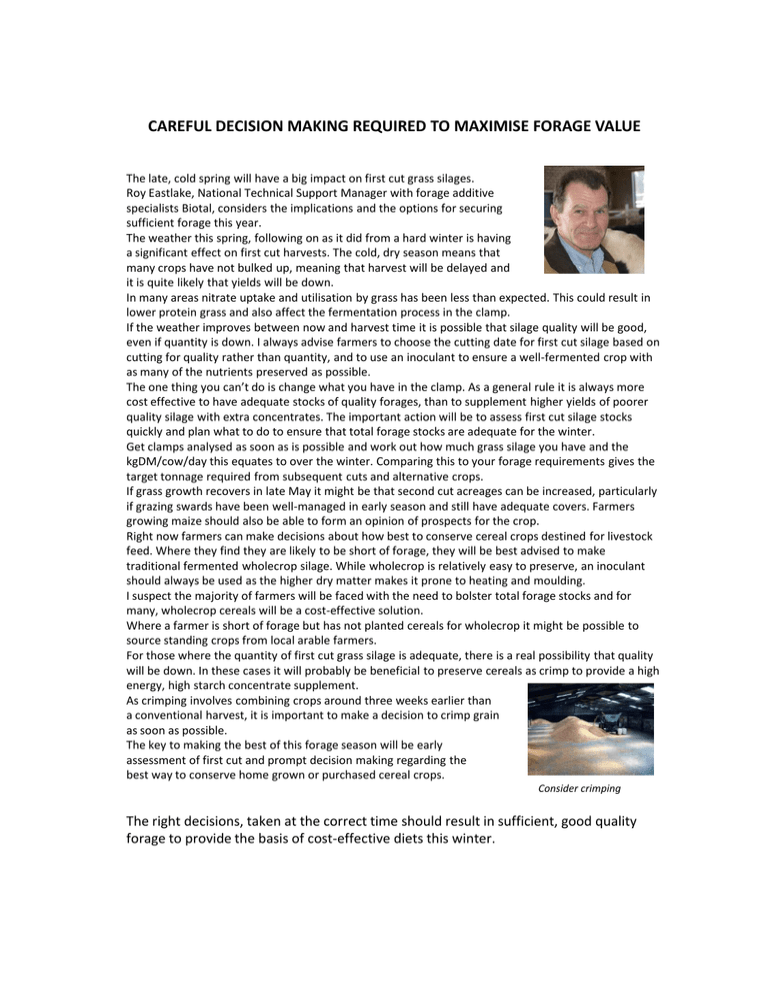
CAREFUL DECISION MAKING REQUIRED TO MAXIMISE FORAGE VALUE The late, cold spring will have a big impact on first cut grass silages. Roy Eastlake, National Technical Support Manager with forage additive specialists Biotal, considers the implications and the options for securing sufficient forage this year. The weather this spring, following on as it did from a hard winter is having a significant effect on first cut harvests. The cold, dry season means that many crops have not bulked up, meaning that harvest will be delayed and it is quite likely that yields will be down. In many areas nitrate uptake and utilisation by grass has been less than expected. This could result in lower protein grass and also affect the fermentation process in the clamp. If the weather improves between now and harvest time it is possible that silage quality will be good, even if quantity is down. I always advise farmers to choose the cutting date for first cut silage based on cutting for quality rather than quantity, and to use an inoculant to ensure a well-fermented crop with as many of the nutrients preserved as possible. The one thing you can’t do is change what you have in the clamp. As a general rule it is always more cost effective to have adequate stocks of quality forages, than to supplement higher yields of poorer quality silage with extra concentrates. The important action will be to assess first cut silage stocks quickly and plan what to do to ensure that total forage stocks are adequate for the winter. Get clamps analysed as soon as is possible and work out how much grass silage you have and the kgDM/cow/day this equates to over the winter. Comparing this to your forage requirements gives the target tonnage required from subsequent cuts and alternative crops. If grass growth recovers in late May it might be that second cut acreages can be increased, particularly if grazing swards have been well-managed in early season and still have adequate covers. Farmers growing maize should also be able to form an opinion of prospects for the crop. Right now farmers can make decisions about how best to conserve cereal crops destined for livestock feed. Where they find they are likely to be short of forage, they will be best advised to make traditional fermented wholecrop silage. While wholecrop is relatively easy to preserve, an inoculant should always be used as the higher dry matter makes it prone to heating and moulding. I suspect the majority of farmers will be faced with the need to bolster total forage stocks and for many, wholecrop cereals will be a cost-effective solution. Where a farmer is short of forage but has not planted cereals for wholecrop it might be possible to source standing crops from local arable farmers. For those where the quantity of first cut grass silage is adequate, there is a real possibility that quality will be down. In these cases it will probably be beneficial to preserve cereals as crimp to provide a high energy, high starch concentrate supplement. As crimping involves combining crops around three weeks earlier than a conventional harvest, it is important to make a decision to crimp grain as soon as possible. The key to making the best of this forage season will be early assessment of first cut and prompt decision making regarding the best way to conserve home grown or purchased cereal crops. Consider crimping The right decisions, taken at the correct time should result in sufficient, good quality forage to provide the basis of cost-effective diets this winter.

